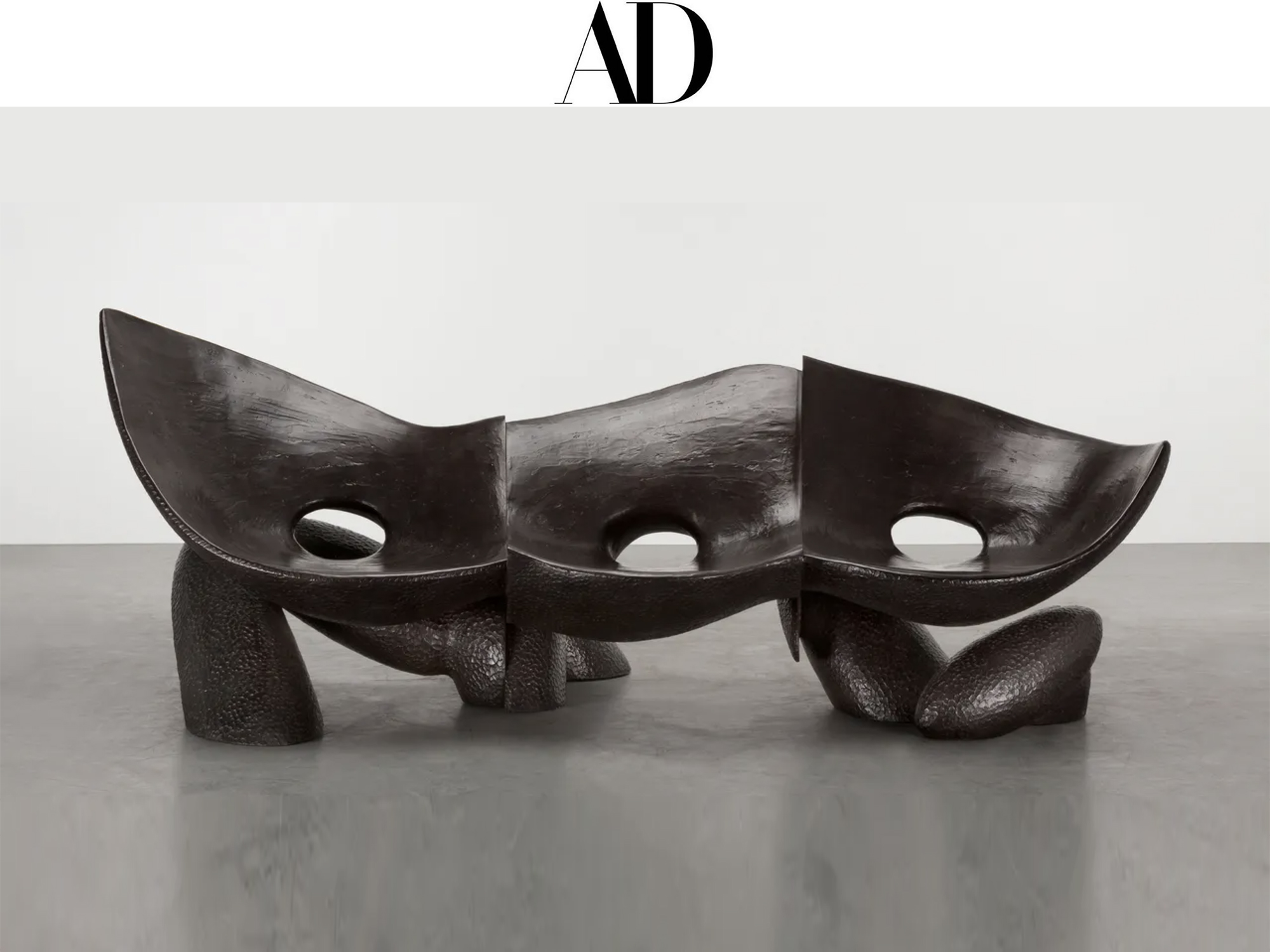By David Sokol
By 2003, the American studio furniture legend Wendell Castle had amassed a trophy case of lifetime achievement awards. But the accolades largely referred to functional sculptures made in the 1960s and ’70s, and they came with a perception that perhaps the then 71-year-old’s best days were behind him.
“I knew of Wendell as a historical figure more than a contemporary figure,” Marc Benda says of first meeting Castle at a Museum of Arts and Design fundraiser that year. He adds that perhaps Castle believed the hype, recalling, “Wendell seemed to think he was missing a way to bounce [ideas] off anyone.” The upcoming show at Friedman Benda in New York, “Wendell Castle: A New Vocabulary,” is the gallery’s first posthumous exhibition of Castle’s work, and it celebrates how Castle got over the Reagan era and learned to love smashing boundaries again.
At the time of their introduction, Benda was in his mid-20s and exploring contemporary European and Japanese designers’ shift toward materials and technology research. The highly regarded New York gallerist Barry Friedman had tapped Benda a year earlier to bring living artists into the fold. Benda and Castle’s mutual needs augured a fruitful collaboration across generations, and their instant personal connection promised that that relationship could run deeper than transactions. Castle agreed to have Friedman represent him with a handshake in 2006, and the following year Friedman and Benda launched their eponymous gallery, with Castle sharing roster space with Ettore Sottsass and Ron Arad.
Since then, Friedman Benda has become a star in the universe of cutting-edge design, and today its orbit includes Faye Toogood, Joris Laarman, and Nendo, among other young visionaries. Through this ascendance, the gallery treated Castle as an equal among peers, by providing support through the Great Recession, exhibiting new works roughly every two years, financing a catalogue raisonné, and generally providing the statesman with access to the creative frontiers he was craving. “He was sheltered from the immediate ups and downs in the industry,” Benda says, “There was no break in him making his work.”
He not only plugged away but flourished. Castle the historical figure is best known for producing otherworldly sculptures in stacked laminated wood and, for a five-year period beginning in 1968, plastic. His first solo exhibition at Friedman Benda in 2008 found Castle experimenting with a variety of metals, and his 2013 New Environment—an extroverted reinvention of his 1970 Environment for Contemplation—was arguably the most ambitious work of his career theretofore. For Castle’s last Friedman Benda show, prior to his death in January 2018, critics literally surprised themselves with adulation for the elder’s restless embrace of high-tech fabrication and politically relevant form.
“Wendell didn’t so much shave off his hair as he grew a beard back,” Benda says of this period in which longtime themes were reappraised with “a courage and a self-confidence that he hadn’t mustered for many years.” Benda never interpreted the work on Castle’s behalf, but always provided the artist with un-sugarcoated feedback: “Having someone in your life to discuss things without any barriers and boundaries is the greatest service I could give him.”
While Benda says it would be hubristic to try controlling public opinion, he concurs that now is the time to shape Castle’s legacy in his absence. “A New Vocabulary” is “a simple juxtaposition of the early and the late work—of the two extended moments in Wendell’s career where he’s employing essentially the same techniques and essentially the same methods of making, but the outcomes are very different philosophically, technically, and formally.” The exhibition, which was excerpted at TEFAF’s New York fair this past spring, stretches from the formative 1958 – 59 Walnut Sculpture that Castle famously made from rejected rifle stocks to Environment for Contemplation and then jumps to the recent past, culminating in snaking, loglike pieces that are being displayed for the first time.
“What happens with many artists who grow quickly and encounter fame early is that eventually the world moves on. Showing the vastness of Wendell’s thinking from two very specific periods should make everyone pause and realize just how big a contribution he made over 60 years,” Benda explains, albeit wistfully. “I would have preferred to do a show of new work in two years.” The showcase will run at Friedman Benda in New York between September 5 and October 12, 2019.










